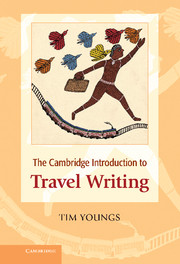Chapter 12 - The way ahead
Travel writing in the twenty-first century
Published online by Cambridge University Press: 05 May 2013
Summary
All the time, the horizons shift for travel writers. There are still stories to tell.
Annie CaulfieldThere is a widespread perception that travel and writing about it have lost their value in our global age as they become more accessible to and practised by more people. Jan Morris, for example, has complained that ‘Few of us want to be called travel writers nowadays, the genre having been cheapened and weakened in these times of universal travel and almost universal literary ambition’. Such grumbles are far from new. In 1891, W. Fraser Rae observed: ‘The complaint now is that too many persons think the trips which they make under the auspices of Messrs. Thomas Cook and Son deserving of commemoration in a volume’. Simply leaving globetrotters’ books alone will, Rae advises, ‘ensure a cessation of an old tale being retold’. It was unlikely that their books would be left alone in Rae’s time and it is impossible for their modern avatars to be ignored now; the proliferation of blogs and the increasing ease of self-publishing means that the production of travellers’ accounts will not be halted by any decline in readership. That should be no cause for alarm or despondency; universal travel and literary ambition should be cheered. Volume does not impede quality. We ought to celebrate what Jonathan Raban has hailed as ‘the resilience of the form [of travel writing], its omnivorous appetite for writing of all kinds – fact, fiction, drama, note, testament’.
Travel writing has historically been associated with discovery, expansion and settlement. Yet we are accustomed to thinking of the twenty-first century as one in which the world has grown smaller, thanks to globalisation and new media technologies. Having reviewed the history and some of the characteristics of travel writing, it is now time to wonder how it might develop. Some of the following remarks will inevitably apply to twentieth-century texts (and to earlier ones also). There is no reason why literature published early in a new century should differ significantly from that published in the late years of the old one: the urge to classify art by century is as powerful as it is arbitrary, but it remains a common and psychologically appealing way of defining literary and other works.
- Type
- Chapter
- Information
- The Cambridge Introduction to Travel Writing , pp. 177 - 190Publisher: Cambridge University PressPrint publication year: 2013



